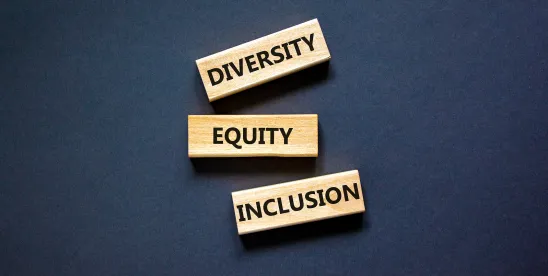The Trump Administration Executive Orders related to Diversity, Equity, and Inclusion (“DEI”), Executive Order 14170 (Reforming the Federal Hiring Process and Restoring Merit to Government Service) and Executive Order 14173 (Ending Illegal Discrimination and Restoring Merit-Based Opportunity) (the “EOs”), have given businesses and other organizations (including universities) much to think about regarding their DEI initiatives. This includes entities that do business with the federal government, entities that do business with state and local governments, and entities with operations outside the United States. As the landscape continues to shift, below are four issues every organization should consider as they perform their DEI reviews:
1. Conflicting State Law or State Contractual Requirements
Let’s start with a quick refresher. The U.S. Constitution provides the following regarding conflicts between federal law and state law:
This Constitution, and the Laws of the United States which shall be made in Pursuance thereof; and all Treaties made, or which shall be made, under the Authority of the United States, shall be the supreme Law of the Land; and the Judges in every State shall be bound thereby, any Thing in the Constitution or Laws of any State to the contrary notwithstanding.
This is known as the “Supremacy Clause.” The Supremacy Clause is the primary constitutional foundation for what has come to be known as the federal “Preemption Doctrine.” Courts have interpreted the Supremacy Clause, which itself focuses on “laws,” to provide federal regulations and valid Executive Orders (i.e., constitutional Executive Orders) the same preemptive effect.
However, many entities currently are facing a different challenge: What to do if the state/federal conflict is not clear. The possibility of a not clear state/federal conflict is not at all far-fetched, especially where the definition of “illegal DEI” still is unsettled. (See a prior blog by our colleague for a refresher on what is “illegal DEI” according to the EOs.) While OPM on February 4, 2025, provided industry with “further guidance ending DEI Offices, Programs, and Initiatives,” which included examples of “illegal DEI,” many questions still remain unanswered. These unanswered questions make it harder for businesses to determine whether a state/federal conflict actually exists.
In the absence of a clear state/federal conflict, businesses may find themselves in a bind, with competing yet different state and federal obligations. Businesses, for example, may need to continue submitting state-required reports consistent with state requirements knowing that those same reports are looked upon unfavorably by the Federal Government. Where possible, businesses should work with their state or local government partners (e.g., contracting officers) to determine the appropriate path forward in light of the EOs.
2. Whether the Executive Orders Apply to Corporate Parent/Subsidiary/Affiliate Entities
Typically, the default rule is that Federal Acquisition Regulation (“FAR”) clauses apply to the entity executing the award document (the contracting entity). When a new requirement is announced, a common concern of contractors is whether the forthcoming FAR clause will reach into their corporate parents, subsidiaries, or affiliates. The DEI-focused EOs will be implemented, at least in part, by new contract or grant terms incorporated into federal awards. Based on history, entities should have an answer to this question during the rulemaking process.
We have seen this same concern unfold twice recently. The first instance was when Section 889 of the Fiscal Year National Defense Authorization Act came into being. The scope of that rule applied to the “entity,” which raised questions regarding whether the rule applied to affiliates entities. The Section 889 Interim Rule clarified that it would not:
The 52.204-25 prohibition under section 889(a)(1)(A) will continue to flow down to all subcontractors; however, as required by statute, the prohibition for section 889(a)(1)(B) will not flow down because the prime contractor is the only “entity” that the agency “enters into a contract” with, and an agency does not directly “enter into a contract” with any subcontractors, at any tier.
A similar concern arose regarding Executive Order 14042 (Ensuring Adequate COVID Safety Protocols for Federal Contractors). EO 14042 explicitly stated that affiliates would be covered by the FAR clause if employees of the entity shared office space with the contracting entity. If the FAR Council intends the forthcoming DEI-focused FAR clauses to apply to affiliates, we would expect that point to be explicitly stated in the proposed and final rule.
Until there is additional clarity on this point, it is important for entities to respond to any certification requests in an accurate, clear, and straightforward manner, particularly regarding whether your compliance efforts include affiliates.
3. The Applicability of the Executive Orders to Entities that Do Business Outside the United States
As discussed above, the default rule is that FAR clauses apply to the contracting entity, not to its affiliates. The related default rule is that FAR clauses apply to the contracting entity irrespective of whether the entity performs its work in the U.S. or abroad. Whether the DEI-focused EOs apply to entities doing business outside the United States will depend on the approach taken by the FAR Council. FAR 52.222-26 (Equal Opportunity), for example, explicitly states that it does not apply to “work performed outside the United States by employees who were not recruited within the United States.” This means the requirements apply to employees performing outside the United States only if they were recruited in the United States.
On the other hand, FAR 52.222-50 (Combating Trafficking in Persons) requires a compliance plan for all services performed outside the United States. Again, similar to the discussion above regarding affiliates, we expect the FAR Council include explicit language regarding oversees application.
We acknowledge that we may sound like a broken record on this point, but, until we have more clarity, it is important for entities to respond to any certification requests in an accurate, clear, and straightforward manner, particularly regarding whether your compliance efforts include any affiliates performing work outside of the United States.
4. Impact on Universities
The Executive Orders make clear the federal government is focused not only on goods and services providers, but also on the higher education sector. Because many major universities receive federal grants and loans, these institutions are subject to a number of federal contract clauses and regulations, as well as OIG investigations and False Claims Act suits. Additionally, many colleges and universities also are government contractors, which means they soon will see the forthcoming contract clauses requiring them to (i) certify the termination of all DEI programs and (ii) acknowledge that that certification is “material” for False Claims Act purposes. Both clauses will materially increase the risk to Higher Ed.
Even if a college or university is not a contractor or direct recipient of federal funds, the federal government nonetheless plans to aggressively identify, investigate, and enforce compliance with all civil rights laws, including the laws the Government (and many courts) read as preventing any preferences based on sex or race. Higher education institutions should thoughtfully consider the impact of the EOs on their respective institutions and should be seriously considering the several activities below.
Next Steps
There still are many open questions regarding how entities should go about implementing the DEI EOs. In this time of uncertainty, below are several activities entities should be considering:
- Cataloging and evaluating state, local, and foreign contracts to identify requirements that could run afoul of the EOs.
- Evaluating the level of risk the entity is willing to take in areas of uncertainty.
- Cataloging and evaluating DEI programs, initiatives, and activities, as well as internal and external communications regarding DEI initiatives (e.g., scrubbing website, CSR reports, internal announcements, etc.). And, ultimately, eliminating those programs, initiatives, and activities that run afoul of federal law and/or the EOs.
- Briefing leadership on the steps needed to comply with the EOs and the potential risks associated with the agreed upon path forward for the respective entity, including from the False Claims Act. (For more on this risk, see the blog published by our colleague here.)
- Working with experienced in-house or outside counsel and communications experts to craft policies and communications that demonstrate an intent to comply with the EOs. This includes preparing template responses to the forthcoming modification requests, stop work orders, suspensions, and/or terminations.




 />i
/>i
